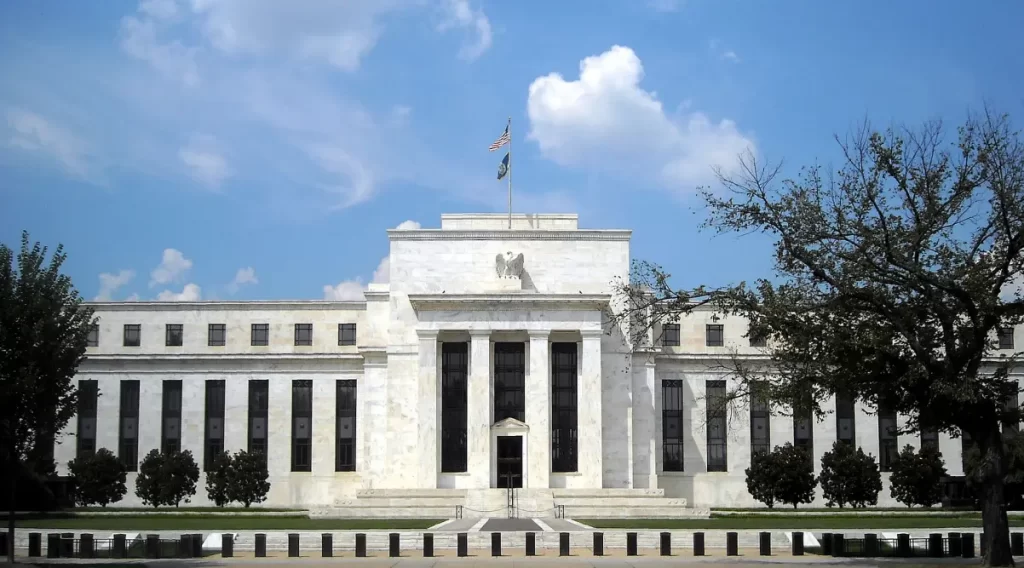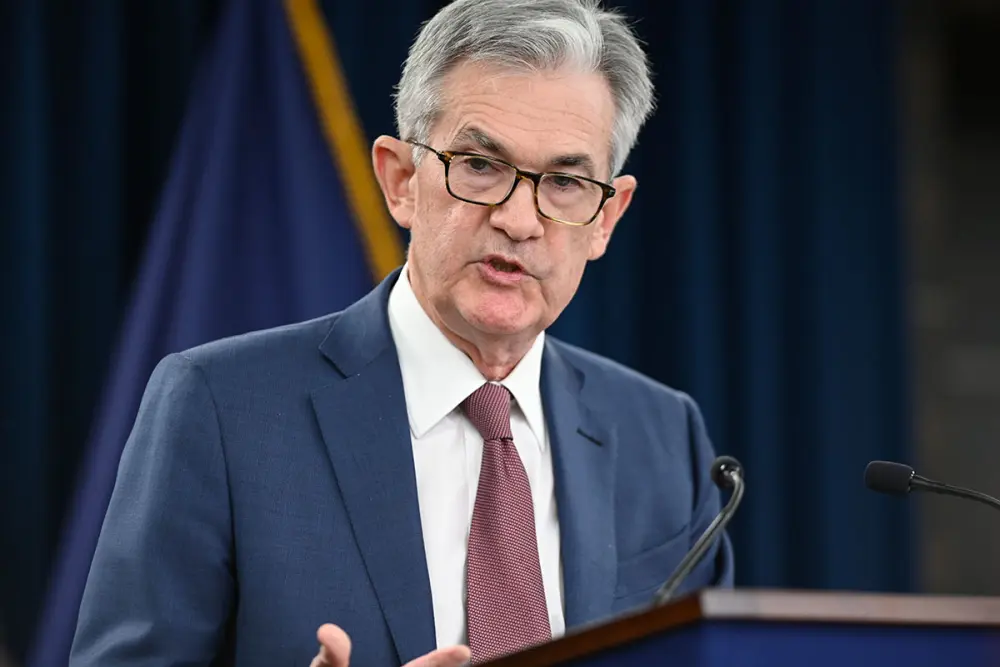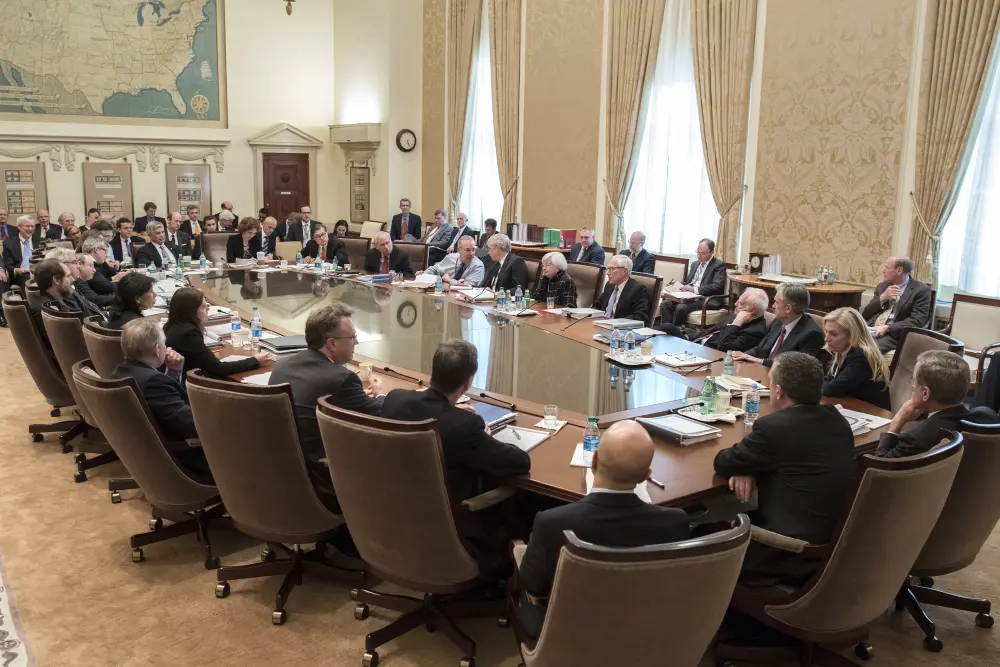In this article, you’re going to learn about the Fed and some of the most important concepts related to it. It is essential to understand why the Federal Reserve is important for investors and how it affects the market. That way, you will get the most out of your investments, regardless of market conditions.
Table of contents:
What Is the Fed?
The Federal Reserve System, more commonly the Fed, is the central banking system of the United States. It was formed in 1913 to combat financial crises in the late 19th and early 20th centuries. These crises resulted in financial anxiety, which called for a more stable and reliable banking system in the United States that would provide the fast-growing nation with better financial safety.
The Idea Behind the American Central Banking System
So why was the Fed (Federal Reserve System) created? The idea of creating a central bank was a contentious one. It remained just that—an idea—until the financial crisis in October 1907. Then the US witnessed an event known as the Panic of 1907 when it gained the momentum needed to set the ball rolling.
This was when Congress, seeking a proper response to the crisis, first formed the National Monetary Commission. The commission’s role was to understand what was causing the crisis and assemble a viable reform plan.
The commission’s findings led to the passage of the Federal Reserve Act in 1913. That was also when the US central banking system was first established through the Federal Reserve Act. The idea behind the Institution was to designate an independent government entity that would provide the country with a stable monetary and financial system. It was created to look over both public and private interests.

About The Fed’s Role In The US
To this day, the Fed operates as a somewhat independent entity within the government. The main aims and objectives are fostering employment, controlling and stabilizing prices, and moderating long-term interest rates. Thanks to its unique position within the government, it can do all of those things.
The Federal Reserve has access to various mechanisms that allow it to:
- regulate banks,
- set monetary policies,
- provide banking services to the government,
- act as an end-of-the-line lending system capable of bailing out and saving companies that are key to the national economy and safety of the United States.
How The US Central Banking System Shapes Economic Growth & Stability
Despite a contentious amount of influence and power, the Federal Reserve System is widely seen as a critical entity that allows for maintaining the stability of the US economy that helps foster growth. What’s also important is that it continues to be improved.
The creation of the American central banking system was one of the defining moments for the US economy. Since then, it has proven effective in minimizing the negative effects of financial crises and promoting economic growth over the past century.

How does the Federal Reserve Affect the Market?
It is a complex financial institution that can strongly influence American and global economies.
It has a large arsenal of tools at its disposal and can influence the economy and financial markets in various ways.
1. Changing interest rates
As we all know, with great power comes great responsibility. American Central Bank has a unique ability to increase or decrease interest rates, which can impact financial markets drastically. Generally, the higher the interest rates, the lower the bond prices, and the lower the interest rates, the higher the prices. As an investor, you need to be on top of the Fed’s actions so you’re aware of the situation. An excellent way to keep up to date with important information about the Fed is to follow the Federal Reserve meeting schedule on their website.
2. Quantitative Easing
The Institution can add liquidity and stimulate growth through quantitative easing, simply an act of the Fed purchasing assets. The Fed may purchase large assets from banks and other financial institutions to push economic growth. This results in lower interest rates, making it easier for consumers and businesses to make purchases, which drives the economy.
Since the Fed’s monetary policy decisions can have a tremendous impact on the economy, it’s important to stay up to date with its latest decisions and consider its impact on the economy rather than making investments based on short-term movements in the market.
3. Setting monetary policy
The Federal Reserve System plays an integral role in implementing monetary policy. Monetary policy is what the central bank does to manage the supply of money and credit. The goal is to maintain favorable economic conditions, including price stability, reasonable long-term interest rates, and high employment.
The American Central Bank implements monetary policy by setting the federal funds rate. By doing so, the Institution can also affect other interest rates, such as the rates regular consumers and businesses will have to pay for their loans.
4. Purchasing and Selling Reserves
The Fed can purchase and sell government securities to add or drain monetary reserves from the banking system. For example, if the Federal Reserve decides to add to its reserves, it can increase the overall supply of money and stimulate economic activity. On the other hand, draining reserves reduces the amount of money open for lending, which may result in higher interest rates.
5. Research and Regulation
Besides its monetary policy actions, the central American monetary institution also supervises and regulates banks. Moreover, it researches and provides invaluable data in the field of economy. It is also capable of saving corporations during financial crises by providing loans.
Remember that understanding the important information about the Fed and its role in monetary policy, interest rates, asset purchases, and communication can significantly help you make informed investment decisions. However, it’s important to remember that the Fed’s actions and impact can be complex and unpredictable, so it’s important to have a long-term perspective and not make any rushed judgments.
6. Setting the Fed Funds Rate
The Federal Funds Rate is an interest rate that determines the rate at which banks lend overnight funds (a type of open-ended debt scheme) to each other, usually on an uncollateralized basis.
The Fed Funds Rate can heavily influence the economy and financial markets. The target range for the rate itself is set and controlled by the Fed.
The Fed Funds Rate serves as the standard for other interest rates, such as car loans, mortgages, or credit card loans. As mentioned, the Federal Reserve can heavily influence economic growth by raising or lowering the Fed Funds Rate. When the rate goes up, it telegrams that borrowing costs will likely be going up, which can mean hitting the breaks on economic growth. On the other hand, when the Fed Funds Rate goes down, it signals that the borrowing costs will go down. It generally results in economic growth.
7. Trading Treasury Securities
Everyone should know about the Fed and how it can affect the market by trading treasury securities in the open markets. By doing so, the US Central Bank can shape the money supply in the banking system, which influences interest rates.
The US Central Bank can also provide banks with short-term loans, improving their liquidity. Making the banks more liquid influences credit availability and interest rates.

What Happens to the Stock Market When the Fed Raises Interest Rates?
Between 2004-2006, the American Central Bank gradually raised interest rates from 1% to 5.25%. The S&P 500 Index rose by over 20% during this period, despite the interest rate hikes. During that particular period, the economy was robust. To illustrate a pessimistic scenario, in 2013, the US Central Bank began to reduce its asset purchases. This resulted in higher interest rates, which were met with a negative response from the market.
During that period, the S&P 500 dropped by some 10%, which might have been partly caused by the Fed’s decreasing asset purchases, which signaled the end of favorable monetary policy and higher interest rates.
So what is the main takeaway from these examples? Above all, the impact of interest rate hikes is a complex process that depends on many variables. It includes the economy’s strength, inflation, and market sentiments.
How Do Different Markets React to the Fed’s Raising and Lowering Interest Rates?
The outcome of the decisions made by the US central bank may vary across different markets and assets. Below are examples portraying how different markets can react to changes in interest rates by the Fed:
- Bond market: When the US Federal Reserve decides to raise interest rates, low-yielding bonds may become less attractive to investors. This, in turn, usually lowers prices for these bonds. On the contrary, if the Institution decides to lower the interest rates, high-yield bonds tend to become more attractive. It may result in their prices soaring. These actions can affect the prices of government and corporate bonds, as well as other fixed-income securities.
- Stock market: The stock market can react differently to shifts in interest rates depending on various factors, including the overall health of the economy, the performances of the individual companies as well as the broader mood of the market.
- Generally, whenever the US Central Bank raises interest rates, it may increase borrowing costs for companies, which can lead to a drop in earnings and stock prices.
- Conversely, companies may find borrowing money easier when the Institution cuts interest rates. It usually marks an increase in earnings and stock prices.
- Real estate market: Interest rate fluctuations can also impact the housing market by affecting home buyers’ mortgage rates and borrowing costs. When the Fed raises interest rates, buying a home can become more expensive, dampening housing demand and bringing home prices down. By contrast, when the interest rates are lowered, purchasing a home can become less expensive, increasing demand and home prices.
- Currency market: Changing interest rates can also affect the value of individual currencies relative to each other (Forex market). For example, raising the interest rates can make investments in the US dollar more attractive, which may drive up the dollar’s value relative to other currencies. When the Federal Reserve lowers interest rates, it could make investments in other currencies more attractive, leading to dollar depreciation.
How To Protect Your Portfolio From Rising Interest Rates?
As an investor, you generally want to make as much profit as safely as possible. Sometimes, you’re thinking exclusively about protecting your investments from inflation or other unfavorable market conditions. Luckily there are several ways you can protect your portfolio from rising interest rates:
- Diversify: Diversifying your portfolio between different asset classes, like stocks, bonds, real estate, and commodities, can help mitigate the impact of rising interest rates. Bond prices tend to fall when rates rise, but stocks and other assets can perform better. You are preemptively cutting your losses by owning a more comprehensive range of assets.
- Invest in high-quality bonds: High-quality bonds, like treasury bonds, are generally less sensitive to changes in interest rates than lower-quality bonds. Consider adding high-quality bonds to your portfolio to stabilize a rising interest rate environment.
- Consider short-term bonds: Short-term bonds tend to be less sensitive to interest rate changes than their long-term counterparts. Consider including a few short-term bonds in your portfolio to reduce the potential adverse effects of rising interest rates.
- Review your portfolio regularly: Keeping your portfolio up-to-date and making adjustments over time will help you stay on track and make more informed financial decisions, particularly in an environment of rising interest rates.
Fed’s Meetings Scheduled for 2023
Usually, the American Central Bank holds eight routine meetings annually to debate and make decisions regarding monetary policies. The Fed’s Meetings Scheduled for 2023 schedule is yet to be officially announced by the FED. Historically, the Federal Reserve has had its meetings in January, March, April, June, July, September, October, and December.
In the past, FED has also held unscheduled meetings to address critical economic and financial conditions, like the 2008 financial crisis or the recent COVID-19 pandemic. The schedule of FED meetings is prone to change, so it is recommended to check its official Fed calendar (https://www.federalreserve.gov/newsevents/calendar.htm )for updates and announcements.
What Is the Fed? Key Information About The Fed. A Summary
At first glance, the American Central Bank can seem like a highly secret organization that works in the shadows to make our lives more challenging. However, once you learn more about its mechanisms, it’s safe to say that you’re likely to appreciate it at least a little bit.
The Federal Reserve System, or the Fed, is an independent governmental entity aiming to foster employment, control and stabilize prices, and moderate long-term interest rates.
The Fed can drive interest rates up and down in response to different world events and economic fluctuations. It pays out to be on top of what is happening worldwide. It is also worth being aware of how the US central banking system has reacted to different crises. This gives you a better chance of predicting the Fed’s next move.
Remember that it takes time to educate yourself and understand the market to a point where you can make responsible decisions. Before investing or trading using your real money, consider testing your skills and knowledge using a SimpleFX demo account, where you can trade without losing your assets. See you there.
All photos in this article come from the Wikimedia Commons collection.

